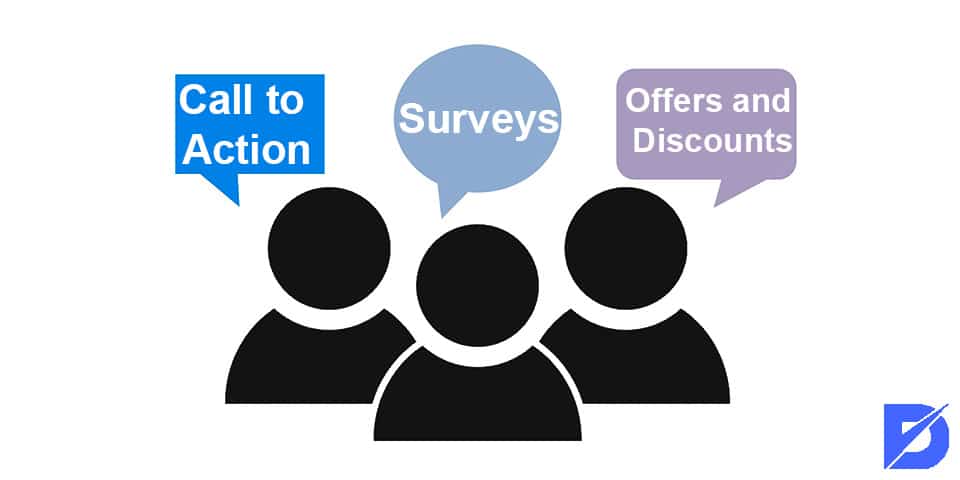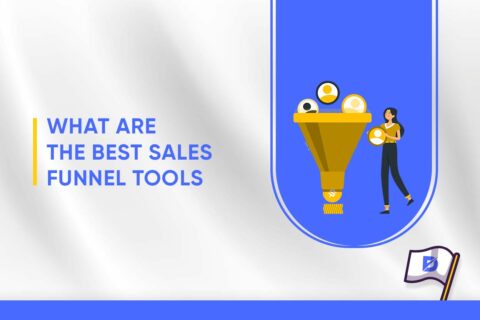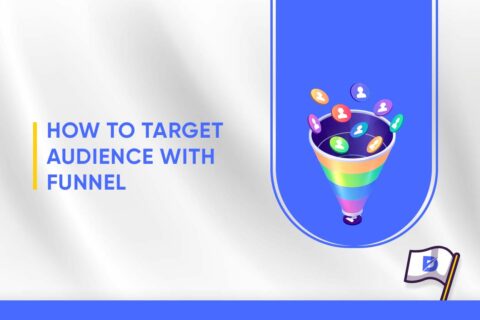The relationship between brands and customers is more sophisticated than what one usually tends to imagine. That’s why marketing funnel has gained a lot of importance. The most challenging part is probably its implementation. Have you ever noticed some of those companies that seem doomed to failure despite their remarkable range of products? In the most typical scenario, they have a website looking dull, almost lethargic, with zero marketing impulse. They seem to wait for the goodwill of providence that would make ‘rain’ customers on them out of nowhere. We also notice the extreme opposite for some other companies. Those are literally the harassers of the market, bombing their audience frenetically with a plethora of promotional content 24/7. The end result is not any better than with the sleepy companies. People eventually get annoyed and turn their back on the intrusive attempts.
You may be targeting an audience that truly needs your products or services. You may also be commercializing something that people don’t necessarily need but would buy anyway, just for fun or vanity. Either way, any brand should be aware that nowadays, consumers are spoiled with a multitude of choices. So they won’t waste their time with companies that treat them poorly or adopt the wrong approach. That’s why your overall marketing strategy should be based on an ingenious dosage. And that’s what today’s article will be about. We will inspect the most effective ways to create a marketing funnel. We will first explain what it means. Then we will enumerate the phases it should include. At the same time, we will show its role in customer relationship creation and maintenance.
What Is a Funnel?
Are you already familiar with the terms marketing funnel, sales funnel, conversion funnel, purchase funnel, purchasing funnel? That’s right, some of them are synonyms. Some others are not but yet used interchangeably. However, they refer to different parts of a larger mechanism. So let’s take them up one by one to avoid any further misunderstanding.
The primary definition of the word funnel is a cone-shaped instrument with a wide top and a narrower bottom. It’s generally used for transferring a substance (liquid, powder, etc.) from one container to another. Note down the idea of transfer, which is important in our context.
The term also refers to the process of sending or redirecting something from one place to another. As you see, we have a process of transfer here again. Sometimes the word can also signify that something is converted from one state to another.
How do we ‘translate’ all this in the field of marketing? The funnel-y words we mentioned so far all derive from a hierarchical model known as AIDA. A stands for Awareness, I for Interest, D for Desire, and the final A for Action. The model was born from the conceptualizations of American advertising advocate Elias St. Elmo Lewis in the early 20th century. It still provides a solid basis for the current studies on brand/consumer dynamics. So with that being said, here’s what we got:
Funnels in Marketing
A marketing funnel is often described as the journey of a consumer from the discovery of a product to its purchase. To be more exact, it’s the strategical ensemble through which a brand manages to convert leads into actual (and, if possible recurrent) buyers. There’s a transfer from one state (awareness of the leads) to another (action taken by the customers). And this is where the analogy with a funnel (as an instrument) makes sense. There’s indeed a wide/large/vague situation in the beginning (discovery), which progressively becomes narrower/more specific until the end (purchase). Since leads are converted into customers over time, the whole process is also called a conversion funnel. However, there’s a slight distinction to be made here. Conversion funnel marketing is a term more particularly used in the context of eCommerce.
A sales funnel is also known as a purchase funnel (or purchasing funnel according to some sources). It’s considered to be one of the integral parts of a marketing funnel. So much so that it becomes tempting to use the two terms as synonyms. Now, is this amalgam totally incorrect? We don’t think so. Let’s specify that while a sales funnel focuses more on selling, a marketing funnel also cares about the overall brand awareness. Don’t worry; the difference will become clearer as we will be going through marketing and sales funnel details in the next sections.

Creating a Marketing Funnel
As we said in the introduction, advertising and customer relations are everything but a piece of cake. Having the ‘right’ products and designing catchy campaigns can’t suffice on their own. There’s rather a whole system comparable to a tapestry with different elements to weave together in a coherent way. That’s the purpose of funnel marketing. Let’s break down the stages that one has to go through. By doing so, we will figure out what to include in a typical marketing funnel template. In brief, our objective is to both design a document and apply its instructions to concrete marketing practice.
Top of the Funnel (TOFU)
This is the initial wide opening of our funnel (remember the analogy with the instrument). It’s the stage during which marketers will attempt to create awareness, as mentioned in the AIDA model. So at that point, you are introducing your brand or any other service/solution you aim to provide. You can use various means to do so. You may prefer an entirely digital marketing funnel comprised of:
- Social media posts
- Blog posts (including guest posting)
- Website for the brand and/or dedicated web pages
- Online audios and videos
- Ebooks
- Presentational emails (with or without newsletters)
- Infographics
You may also go for more traditional material such as:
- Flyers
- Print newsletters
- Ads in printed magazines
- Photos
- Billboards
Thanks to these first initiatives, you will start coming into contact with a group of people that we label as leads. Basically, these are individuals who already show some interest in your brand (even with a simple ‘like’ on your posts). However, they don’t fully qualify yet for the customer status. You will have to keep warming them up with additional efforts.

Middle of the Funnel (MOFU)
Moving on to the next stage of funnel building. This is where your endeavors should start taking shape by becoming more educative. Brand awareness should slowly evolve into informational processes. You need to give more practical details about the usefulness of your products and a rationale for possible purchases. What does your business serve exactly? Which contexts your product A is suitable for, and how does it differ from your product B? What novelty does your brand ultimately bring to the market? You have to answer these kinds of questions meticulously if you want to generate a desire to buy. This stage can be materialized in the form of:
- Surveys
- Special events such as webinars
- Downloadable manuals with more technical details
- Research publications
- Call-to-action (CTA)
- Offers and discounts inviting people to try out your products
As your contacts get more informed, you will start noticing more accurate and in-depth feedback coming from some of them. Their questions will probably be more specific, even technical, demonstrating their further engagement in your marketing funnel. These are your prospects. Namely, a refined target audience who already knows more about your brand and is able to evaluate it appropriately. They may or not become actual customers. But either way, they will be good models to be used while designing your buyer personas.
Bottom of the Funnel (BOFU)
This is the final destination that all marketing funnels should be driving to. If you were diligent enough during the previous phases, now you can expect some action as stated in the AIDA model. Remember, it’s a question of dosage.
What is subject to dosing here is the amount of advertising you have submitted your audience to. In fact, the top, middle, and bottom of the funnel represent what we call an advertising funnel. Yes, another funnelish word (sorry for the load), which you shouldn’t take lightly. If there’s not enough of it (see the example of sleepy companies), you run the risk of remaining invisible. If there’s an excess of it, people will get overwhelmed and end up ghosting you as well. It’s not easy to arrive at the action phase or ‘end of the tube.’ You will manage to do it only if you have been determined yet discreet enough.
So what happens now? Well, people finally make up their minds and start buying your products or services. For real. Congratulations, your efforts to convert them into actual customers have been fruitful. Is it over for all that? No, unless what you were seeking was a one-time experience. Now you have a source to nurture constantly if you don’t want to see it drying up. Keep using the methods mentioned for the previous phases of the funnel. Don’t give up your social media initiatives and website updates. Organize complimentary webinars to gather and examine the level of customer satisfaction. Let your clientele share their stories during those events as well as on your company’s platforms. Keep them informed about any upgrade, innovation, or restructuring you may be going through. All this will encourage them to become advocates of your brand.

Creating a Sales Funnel
Here comes a question that quite naturally follows the previous section: how to create a sales funnel? Indeed, we had hinted at some differences when compared to a marketing funnel, right? In fact, there was already a logic of sales funnel disseminated in the paragraphs above. How realistic would it be to treat marketing and sales as totally dissociated entities anyway? That’s the reason why some tend to consider the concept of marketing sales funnel to be much more accurate. But let’s be fair enough to have a look at the apparent differences, though.
Let’s suppose that we want to sum up the funneling process in marketing that we explained previously. Here’s how our template would look like (from top to bottom):
- Awareness
- Interest/Consideration
- Desire/Prospection
- Action/Conversion
- Loyalty
- Advocacy/Sharing
- Now, in what way a sales funnel template would be different, in your opinion? Check out the following:
- Lead generation
- Lead qualification or evolution
- Negotiation (about features, price, contract, etc.)
- Closure/Conclusion of deals
- Portfolio maintenance/Customer relationship management
Can you see the subtle nuances? The first template incorporates larger aspects related to brand recognition. It almost stands for a socioeconomic model on its own. On the other hand, the second template focuses much more on the general progression of the clientele and sales.
At the end of the day, there’s a matter of interpretation at play. There are various marketing and sales funnel examples. For example, some sources use only one template. They label the TOFU as the marketing portion while they treat the MOFU and BOFU as the sales portion. So you can adopt whichever approach you want, as long as you follow the basic progression explained in the article.
Fuel Up Your Business With Funnels
We have tried to craft this article as a ‘marketing funnel explained’ guide. Hopefully, we have managed to break a myth. Which one? Well, the one that underestimates the complexity of the relationship between brands and customers. A good product coupled with a few commercials won’t make people queue up to buy your products. There’s a need for a sequence of carefully planned events. In a sense, a marketing funnel is almost comparable to a ritual. We have a preparation, a central point, and (if everything goes well) a celebration. Moreover, we want it to repeat itself and even expand over time (by gaining new customers). In sum, following a funnel will ensure coherence and direction for your marketing activities.
Frequently Asked Questions About
The size of your business doesn’t matter. The main principles remain the same. You just have to make some adjustments on a more modest scale. Here again, you will start with brand awareness-spreading activities. Even if you have only a dozen leads, you should still pursue the same conversion goal. Once there, you have to keep ‘checking on’ your clientele on a regular basis. The only difference will be the breadth of your campaigns.
Yes, it does. It’s actually one of the most efficient ways to transmit content that is customized in accordance with your audience profile. You can track their expectations daily and share various materials that go beyond a simple sales logic. It’s also an occasion to interact more with them and gain their trust.
ClickFunnels is an online tool for building funnels. It takes in charge all the elements we have mentioned in the article. From funnel graphics to negotiations with your prospects, you got everything covered.
Forcing people to buy before they feel ready for it. Arouse their interest first before trying to sell anything immediately at all costs.
It’s one of the tactics used, especially while searching for leads. Generally speaking, it’s a landing page on your website where you try to obtain contact information from your visitors (e.g. email address).





No comments to show.